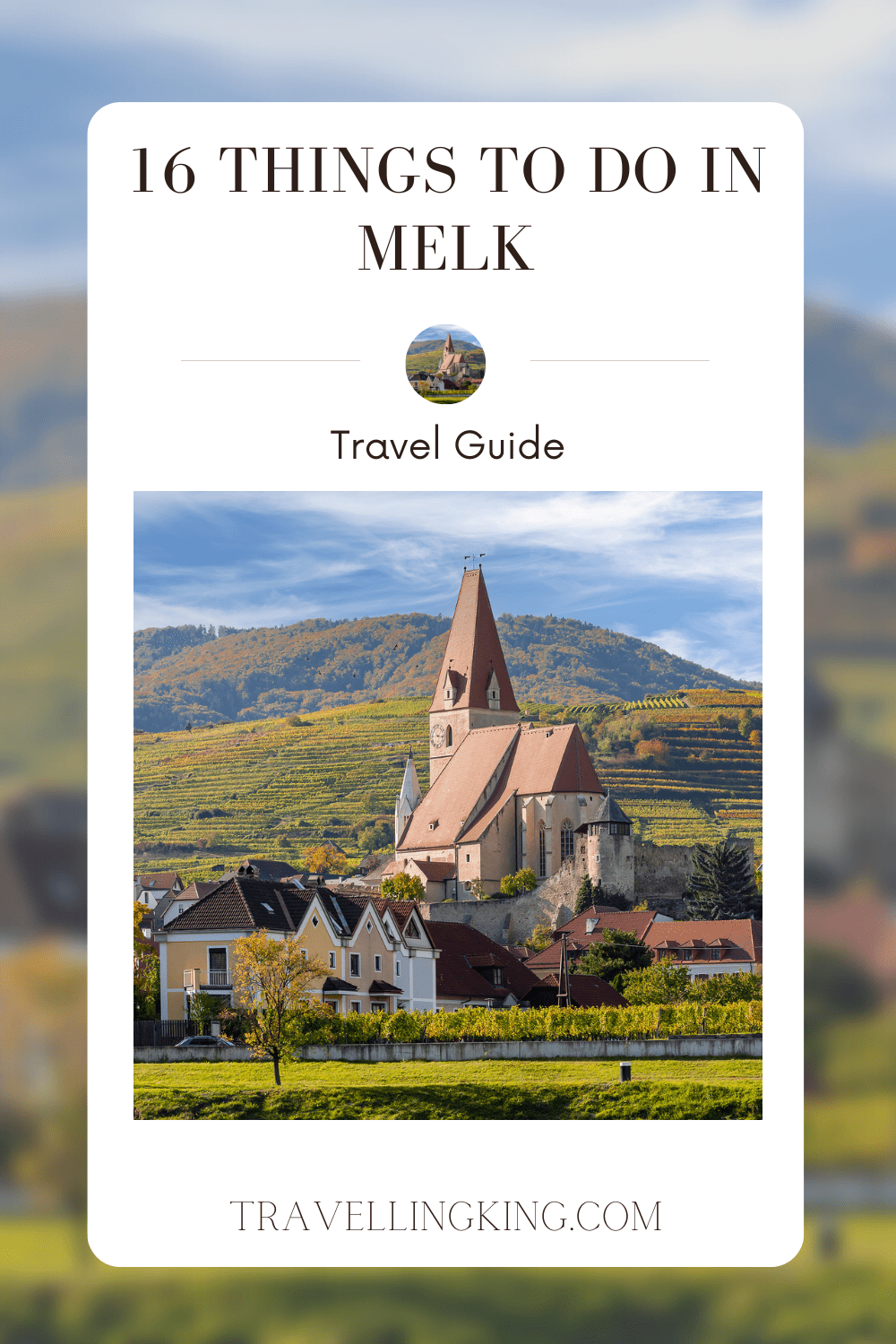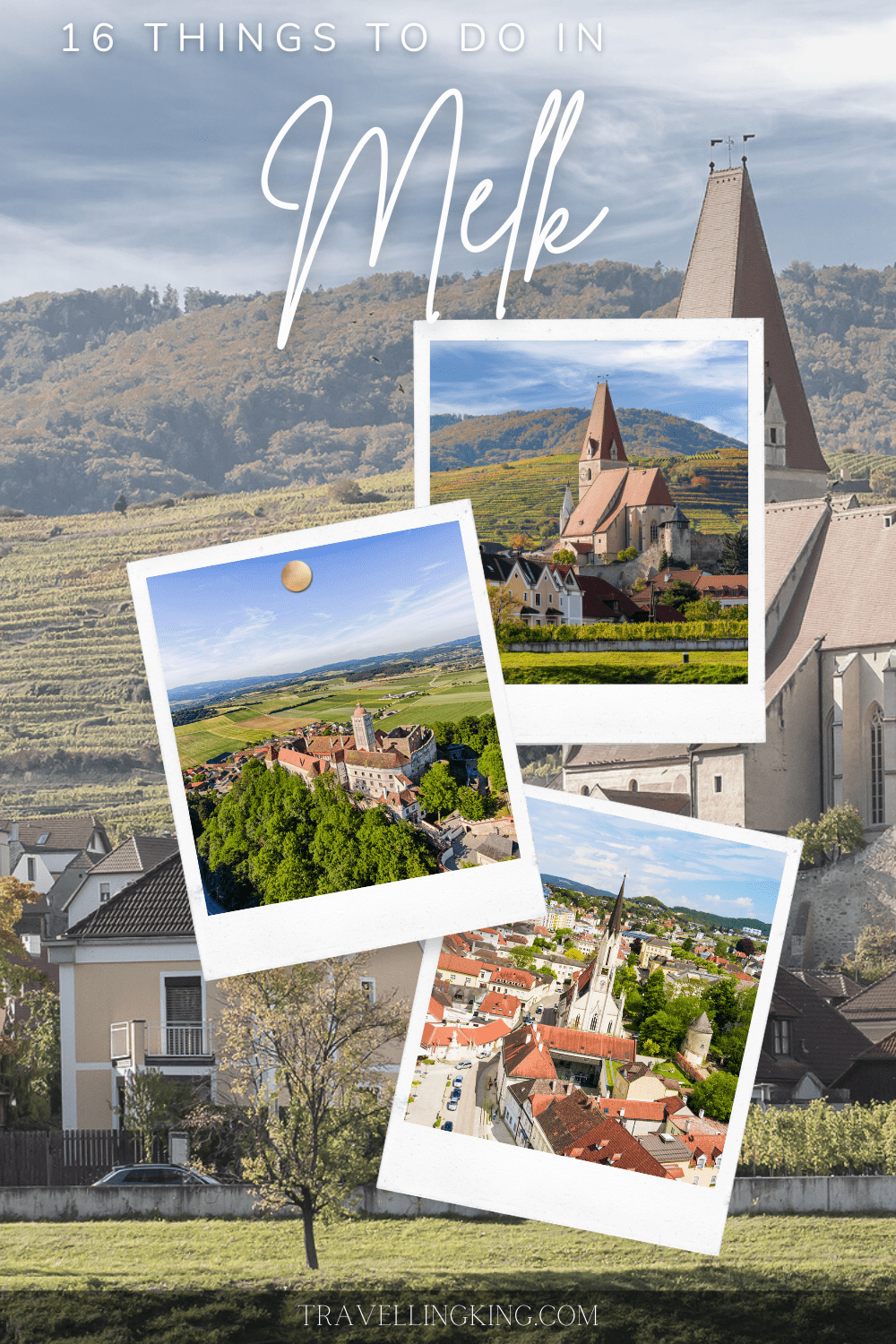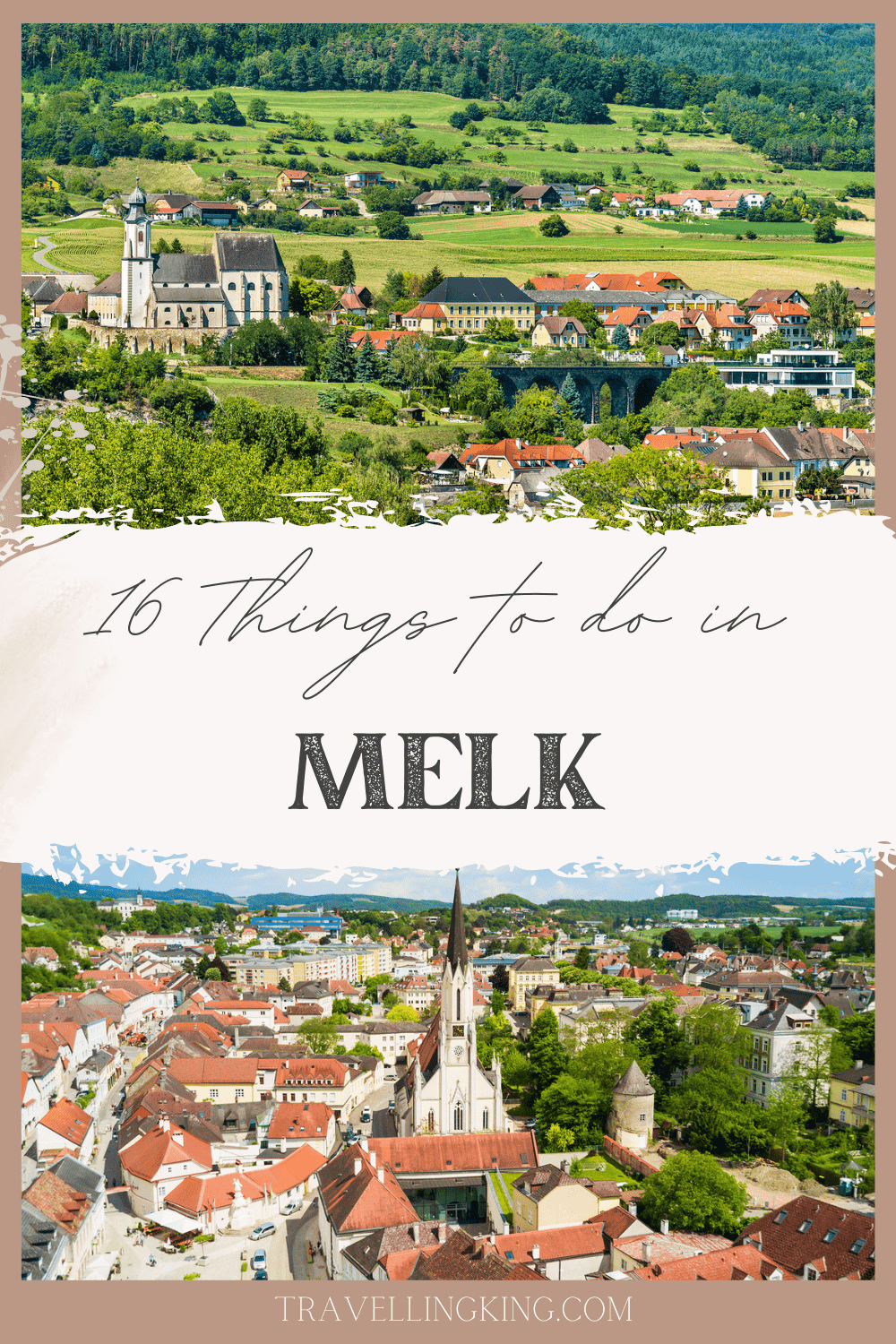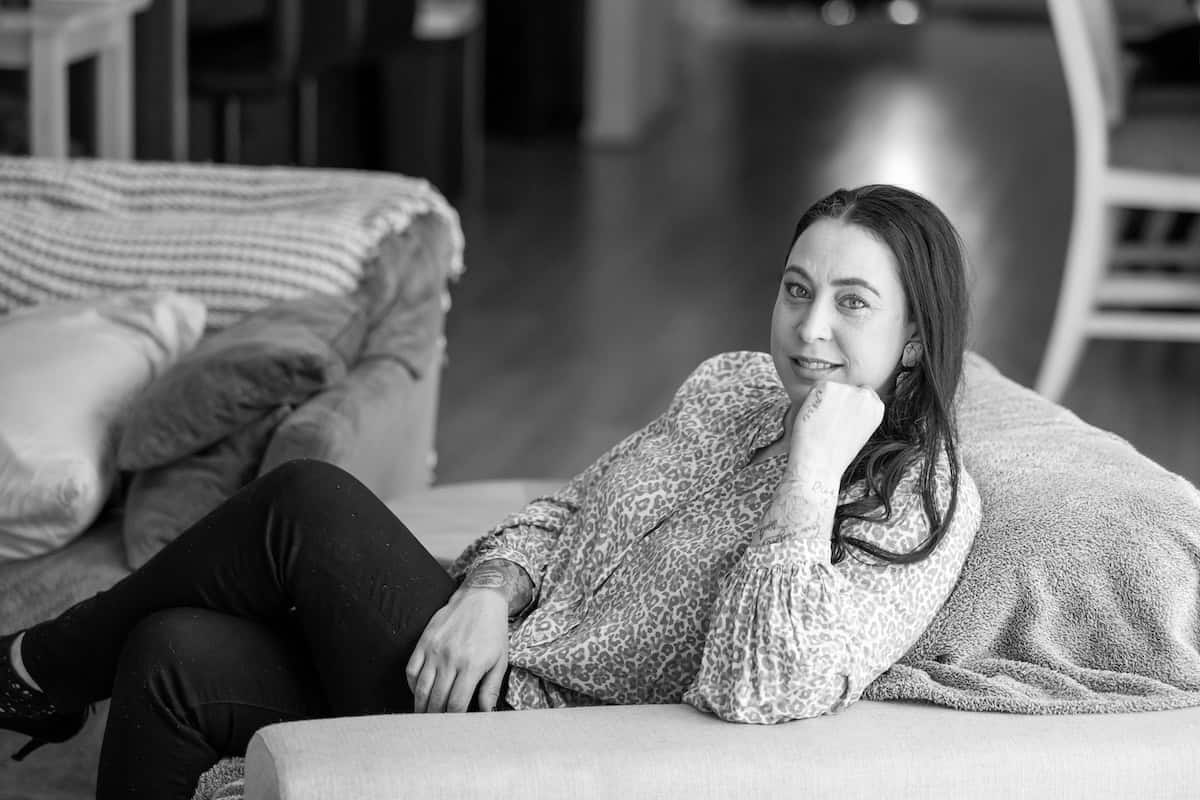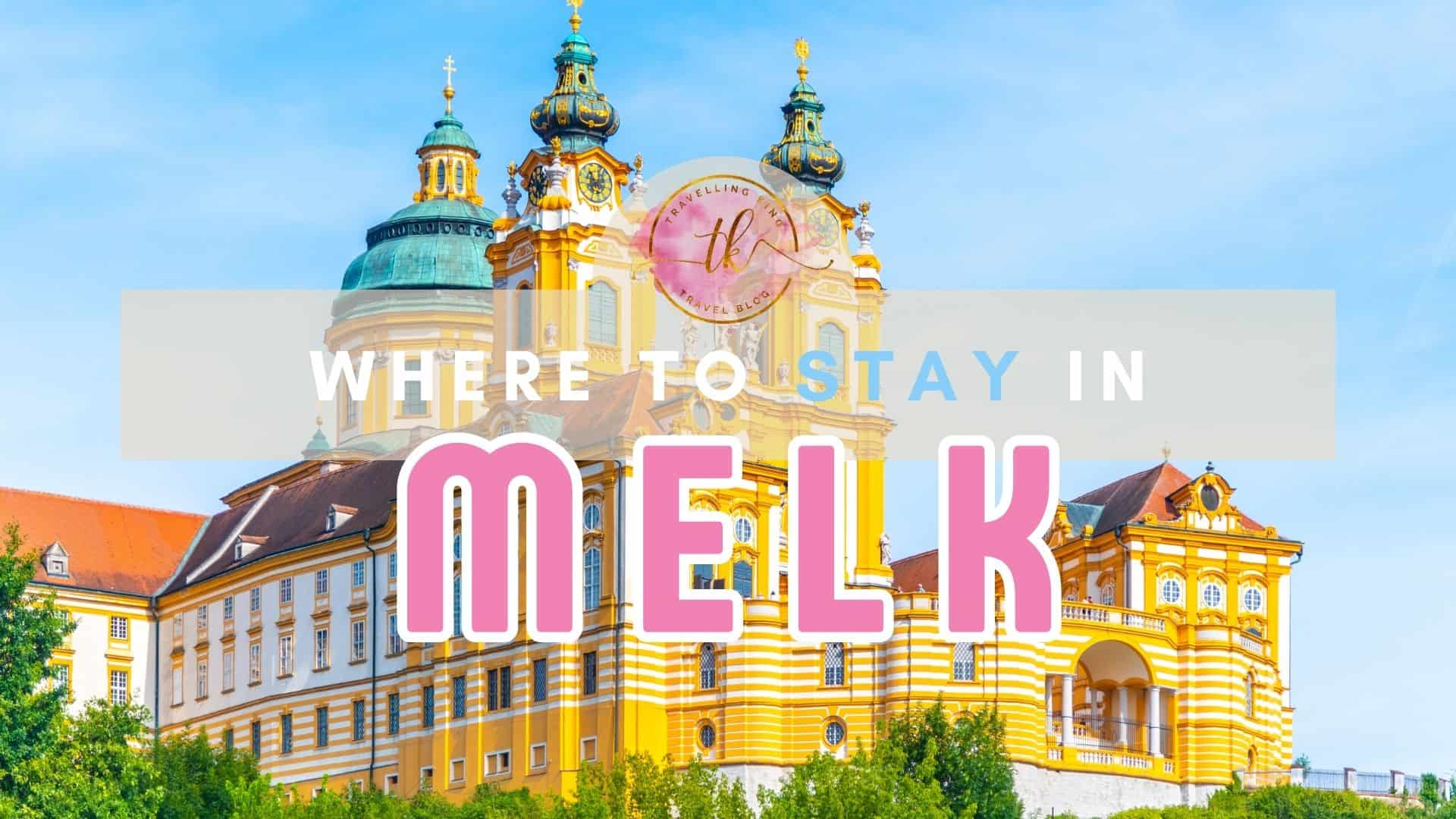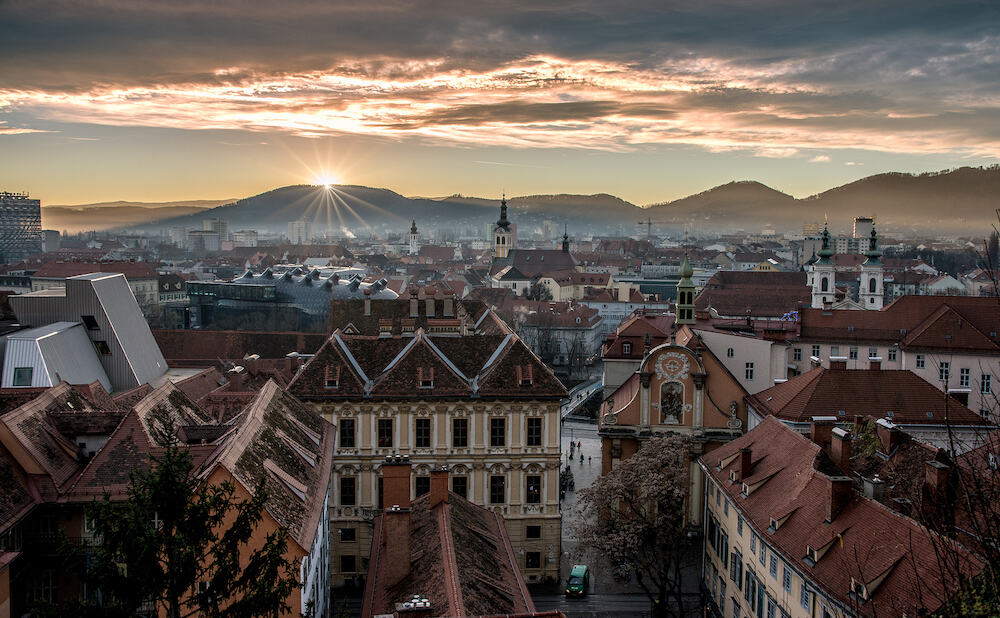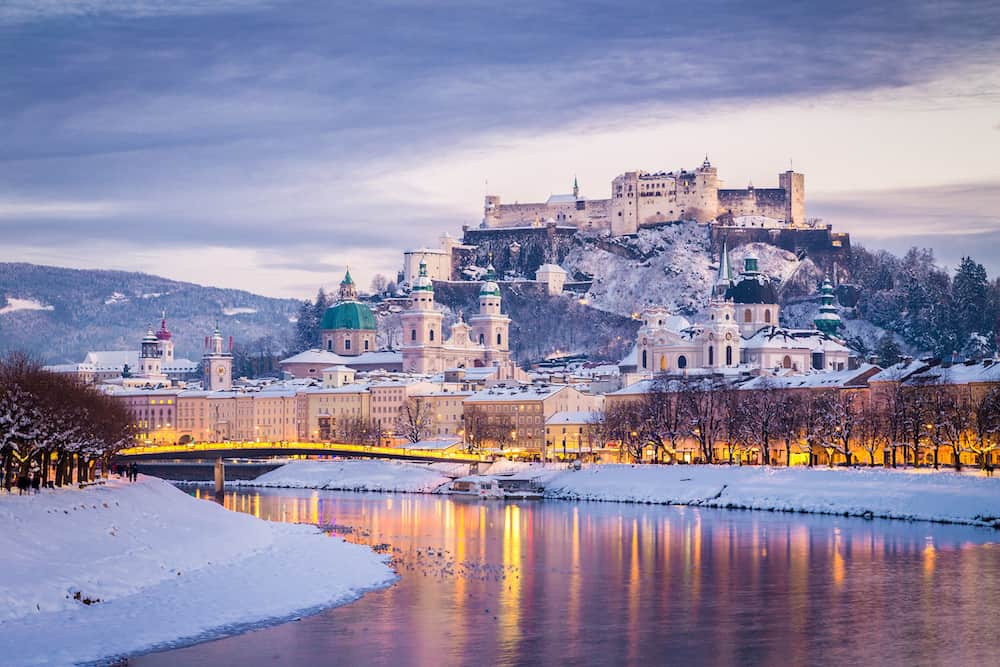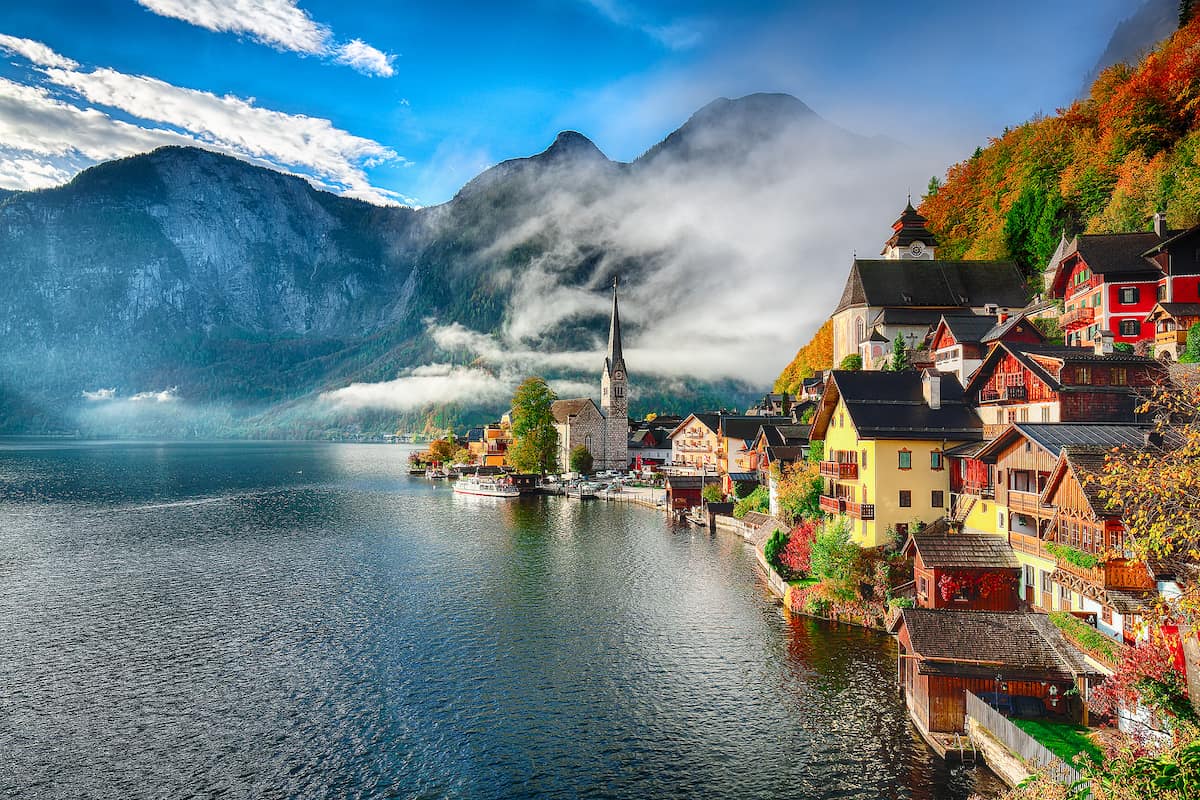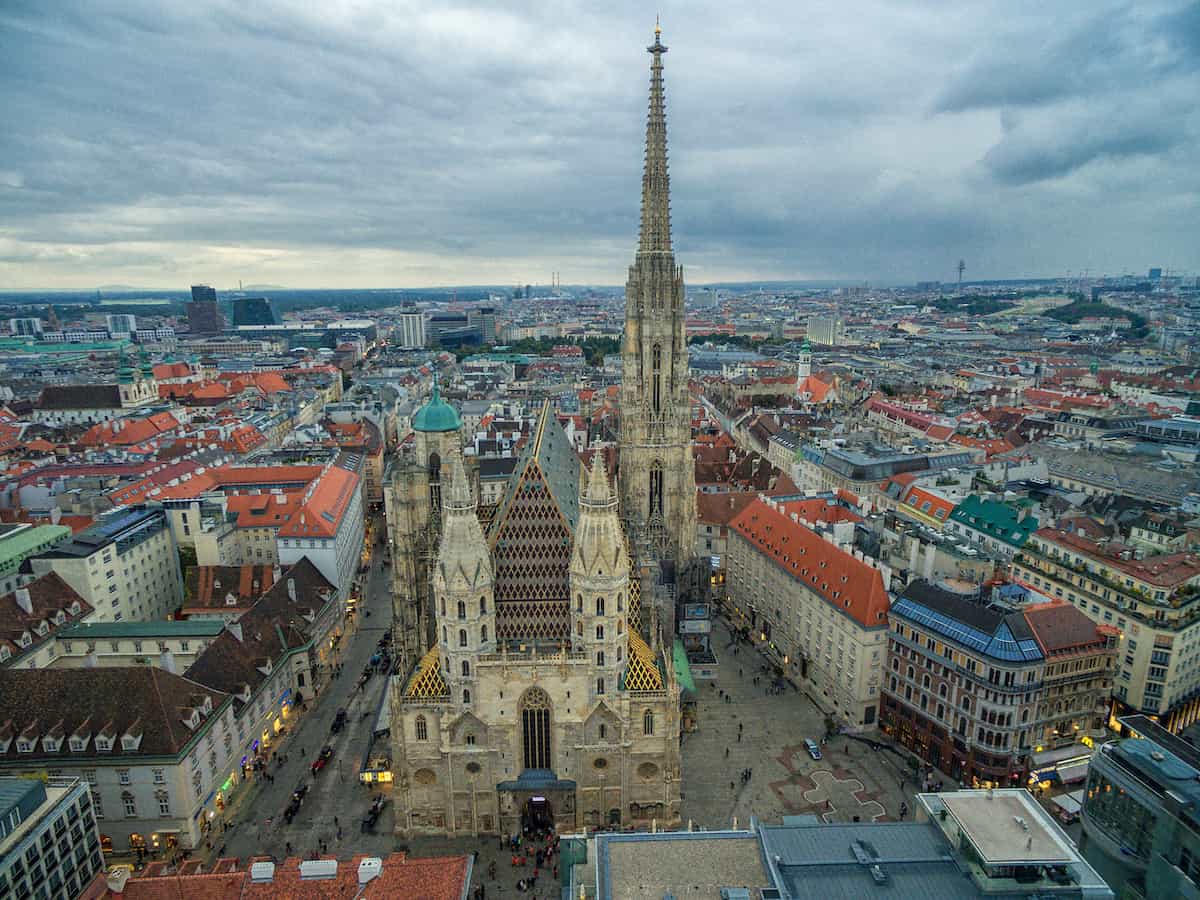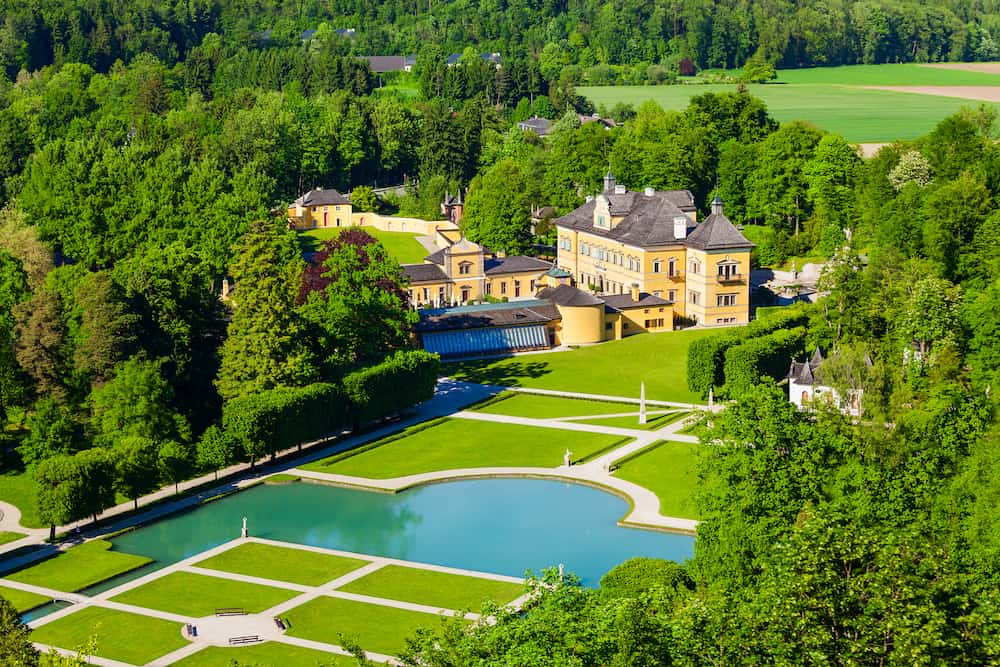16 Things to do in Melk
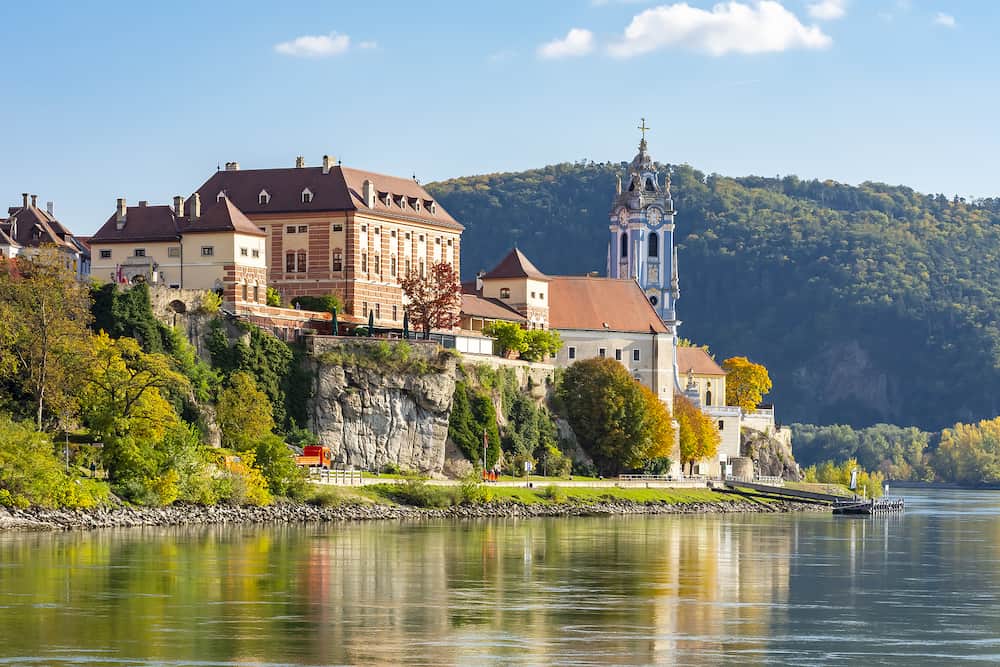
Melk is a small town known for its stunning Baroque architecture, scenic natural beauty and rich history. Despite only having a tiny population of a little over 5,000 residents, there are many fun and interesting things to do in Melk.
Beyond its gorgeous castles and abbeys, Melk offers a variety of other attractions and activities, from scenic walks along the Danube River and the picturesque streets to plenty of opportunities to taste the local wines and cuisine.
The surrounding hills and vineyards are ideal for hiking and outdoor recreation, while the nearby villages and towns offer even more cultural gems to explore.
Before we get onto the list of attractions, you might be wondering, where is Melk exactly? The quaint little town is found in the Wachau Valley region of Lower Austria, along the banks of the Danube River.
Located an hour west of Vienna and an hour and 20 minutes east of Linz, you also might ask yourself, is Melk worth a visit?
Without a doubt, the town makes for an excellent day or weekend trip from either city. Whether you’re interested in history, architecture, nature, or simply learning all about the local culture of smaller towns, Melk is a charming and delightful place to visit.
Read on for the top 16 things to see and do while in Melk, Austria so you can start planning your trip!
Plan your trip
Save on fees abroad with the Wise Card—use it at ATMs, restaurants, and for flights or hotels in over 150 countries. Manage 40+ currencies in real-time with the Wise app.
Need Help Planning?
- Cheap Flights: Find the best deals.
- Accommodation: From hostels to luxury stays.
- Car Rental: Affordable options worldwide.
- Sightseeing Tours: Explore without breaking the bank.
- Travel Adapter: One adapter for all your needs.
- Travel Insurance: Don’t risk it—stay covered.
This post includes affiliate links. Read my full disclosure and content policy.
Melk Abbey
Melk Abbey, also known as Stift Melk, is a stunning example of Baroque architecture in Austria. It is one of the most important cultural and spiritual centres in the country, as well as one of the top tourist attractions.
This beautiful Benedictine abbey is perched atop a rocky hill looking over the town, which is why it will likely be one of the first attractions you see when you visit Melk.
While the abbey was originally founded in 1089, the Baroque structure you can see today was built in the early 1700s.
Austria has countless religious structures, so why is Melk Abbey famous? There are multiple reasons as to why the abbey is so well renowned. It was originally built as a palace for Leopold II, but was later transformed into a Benedictine monastery and has been used for religious purposes ever since.
The monks here have a long tradition of preserving knowledge and culture, and the abbey also houses a library filled with rare and valuable books, making it a go-to for scholars and researchers.
Also inside Melk Abbey is the tomb of Saint Coloman of Stockerau, as well as the remains of numerous members of Austria’s first ruling dynasty, the House of Babenberg.
Another reason the abbey is so famous is because of its undeniably impressive architecture. You can tour the abbey to admire its stunning artwork and Baroque elements, from the impressive ceiling frescoes by Johann Michael Rottmayr and the elaborate stucco work to the spiral staircase between the church and the library.
You can also attend mass here if you wish, listen to classical music concerts, or simply spend time in the peaceful surroundings.
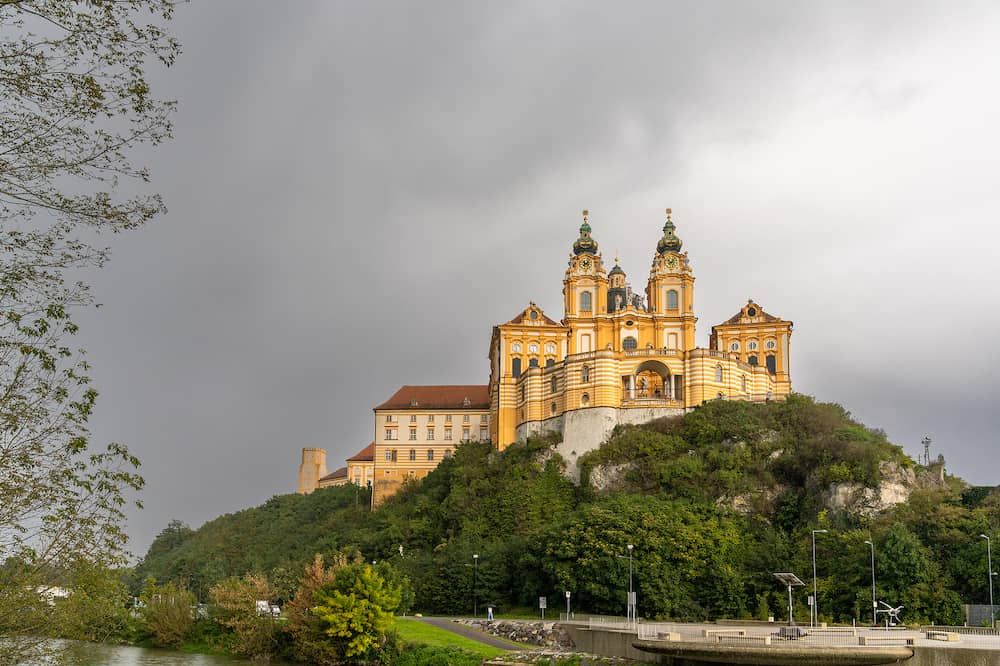
Aggstein Castle
Aggstein Castle is a medieval fortress located about 300 metres above the bank of the Danube River in the Wachau Valley. A visit to this 150-metre-long castle is one of the top things to do in Melk, Austria. It was built in the 12th century and served as a strategic lookout point to protect the region from invading forces.
Throughout the centuries, however, the castle was sieged multiple times. Renaissance-style renovations were carried out in the early 1600s by Anna von Polheim-Parz, the castle’s first female owner. Unfortunately, the castle was severely neglected after her death and fell to ruins once again.
Today, the castle is one of the Wachau Valley’s most popular attractions, offering a glimpse into the region’s long history and providing breathtaking views of the surrounding countryside.
The ruins are surrounded by rolling hills, vineyards and, of course, the stunning Danube River below.
You can hike to the top of the castle to admire the views, explore the ruins, and learn about the castle’s history through informative signs and displays. If you are travelling with kids, there are also tours designed specifically for children.
The castle hosts regular events, including market days and Fairytale Sundays, and there is a popular medieval festival held here in May.
Keep in mind that the castle is closed during the winter, only opening between late March to late November.
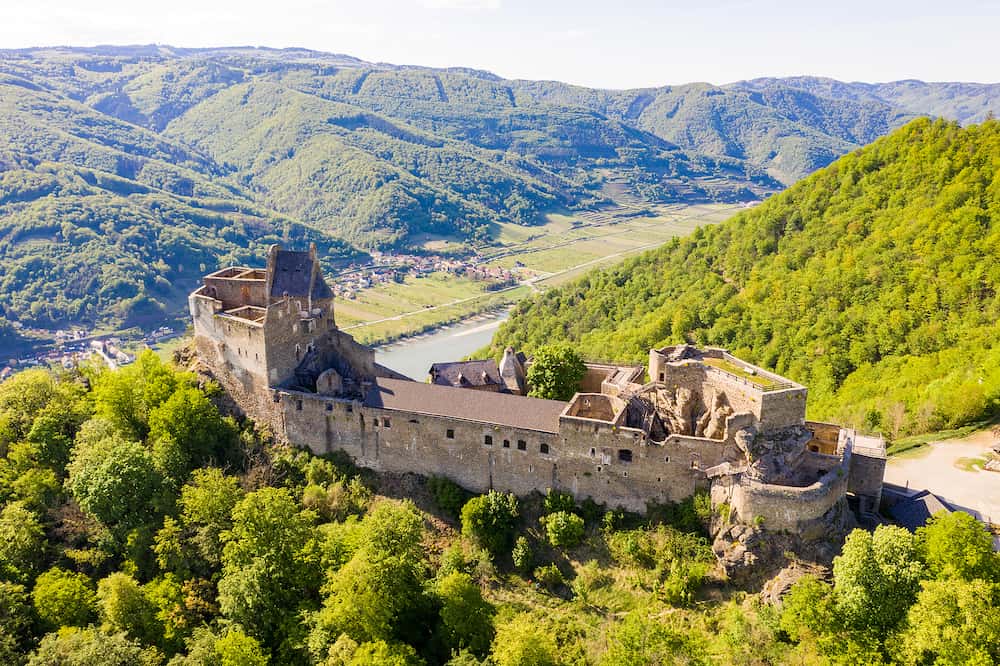
Maria Taferl Chapel
Located about 20 kilometres from Melk in the Lower Austria region is the Maria Taferl Chapel. Construction began in the 1600s to create this small yet beautiful religious structure, though it was not completed until the early 1700s.
The chapel is dedicated to the Virgin Mary and is known for its stunning architecture and peaceful setting.
When visiting, you can wander around and admire the intricate stonework, beautiful stained glass windows and tranquil surroundings.
Since the chapel is situated on a hilltop, you can also enjoy the breathtaking views of the surrounding countryside and the Danube River below.
The Maria Taferl Chapel has been an important pilgrimage site for centuries, attracting many visitors who seek blessings and spiritual renewal. It is also a popular spot for weddings and other special events.
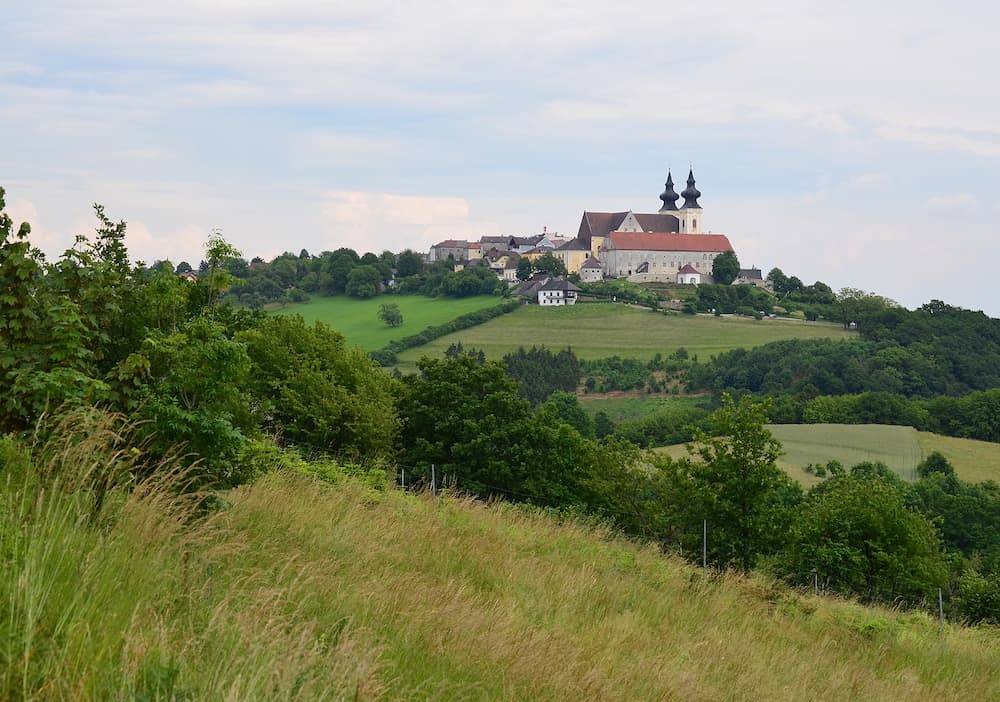
Melk Old Town
Melk’s Old Town is a quaint and historic neighbourhood, home to many historical structures and landmarks that date back several centuries.
One of the best Melk things to do is simply walk around and admire the well-preserved Baroque architecture found throughout the area, or sit down and people-watch with a cup of coffee.
The streets and alleyways are lined with charming buildings, many of which have been restored and turned into shops, cafes and restaurants.
The Rathausplatz (Town Hall Square) contains the local town hall known as the Rathaus, as well as an old house used for gingerbread-making called a Lebzelterhaus.
You should also make sure to see the Hauptplatz (Main Town Square) and the Hauptstrasse, which is considered the main road in Melk.
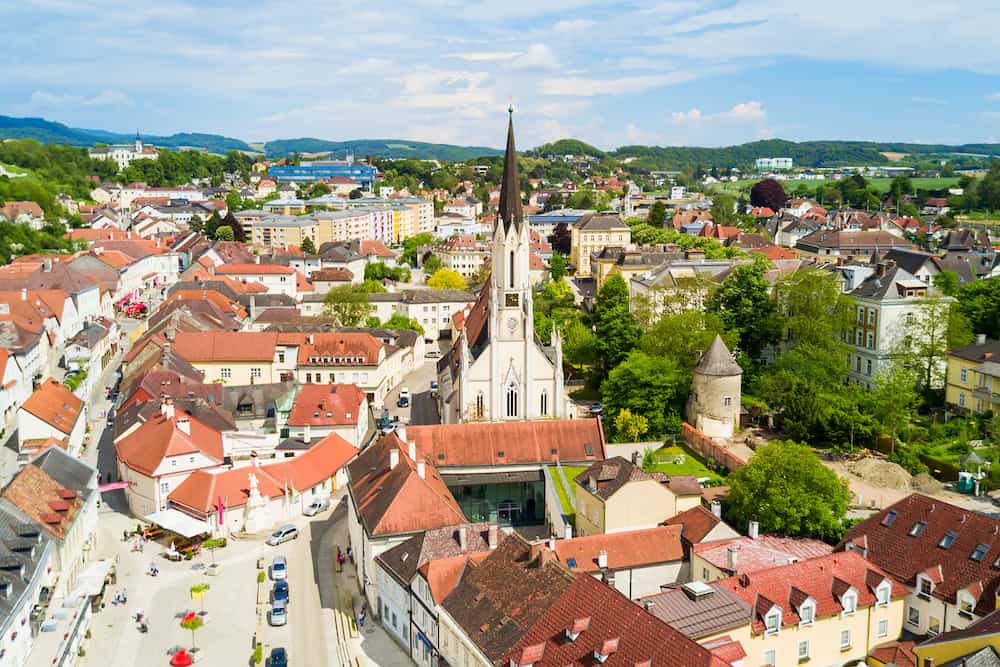
Schallaburg Castle
Schallaburg Castle is a stunning Renaissance-style fortress in Lower Austria, about five kilometres south of Melk.
Although records show that it dates back to 1242, most of the castle was built in the mid-16th century during the German Renaissance Age, making it one of the finest examples of Renaissance architecture in Austria. Yet, the castle also features Romanesque elements with a Gothic chapel.
While touring the castle, you can admire the beautiful exteriors and interiors, including the intricate stonework.
The castle is filled with works of art, including paintings, sculptures and frescoes, making it a popular destination for art lovers and history enthusiasts alike.
Within the courtyard are 1,600 terracotta mosaics of mythical figures and animals, and there are two large dragons measuring 30 metres long and 20 metres high guarding the entrance gate.
The castle’s perfectly-manicured gardens are full of beautiful rose and herb gardens, as well as apple orchards.
In addition to its architectural beauty, Schallaburg Castle contains an international exhibition centre that features new collections every year on different world topics.
The castle’s management also prioritises sustainable renovation and maintenance to preserve the historic architecture and craftsmanship of the fortress.
Unfortunately, the castle is not open to the public year-round. While dates vary each year, it typically closes in November and opens again in either April or May.
Be sure to check in advance if you are visiting Melk during these months to avoid any disappointment.
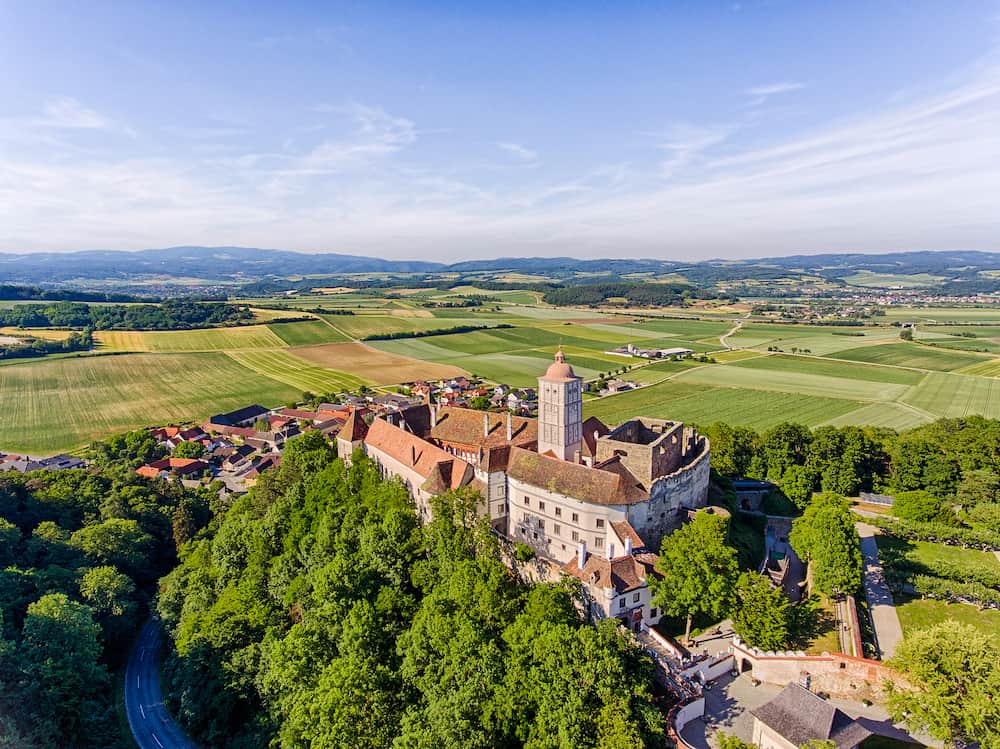
Artstetten Castle
Artstetten Castle is a historic chateau in Lower Austria, not too far from Melk. It is best known for its connection to the Austrian imperial family and is often referred to as the Habsburg Family Mausoleum.
The castle was built on the ruins of an earlier 13th-century structure but has undergone significant renovations and additions over the years.
Ownership has passed through the hands of various emperors and archdukes, and was acquired in 1889 by Archduke Franz Ferdinand, the heir to the Austro-Hungarian throne at the time.
Today, Artstetten Castle is open to the public as a museum, with guided tours offering you a glimpse into the life and times of the Habsburg family.
The castle’s many rooms and galleries are filled with artwork, historic artifacts, and other objects related to the Habsburgs, including the personal possessions of Franz Ferdinand and his wife, Sophie, who were both killed in the same assassination.
The castle also contains a chapel and crypt, where many members of the Habsburg family are buried.
The grounds of Artstetten Castle also contain beautifully-landscaped gardens, which were created in the 19th century. The picturesque outdoor space includes a rose garden, an ornamental pond and a hedge maze.
As with most castles in the region, Artstetten Castle is closed during the winter. It typically opens in early April and closes at the beginning of November.
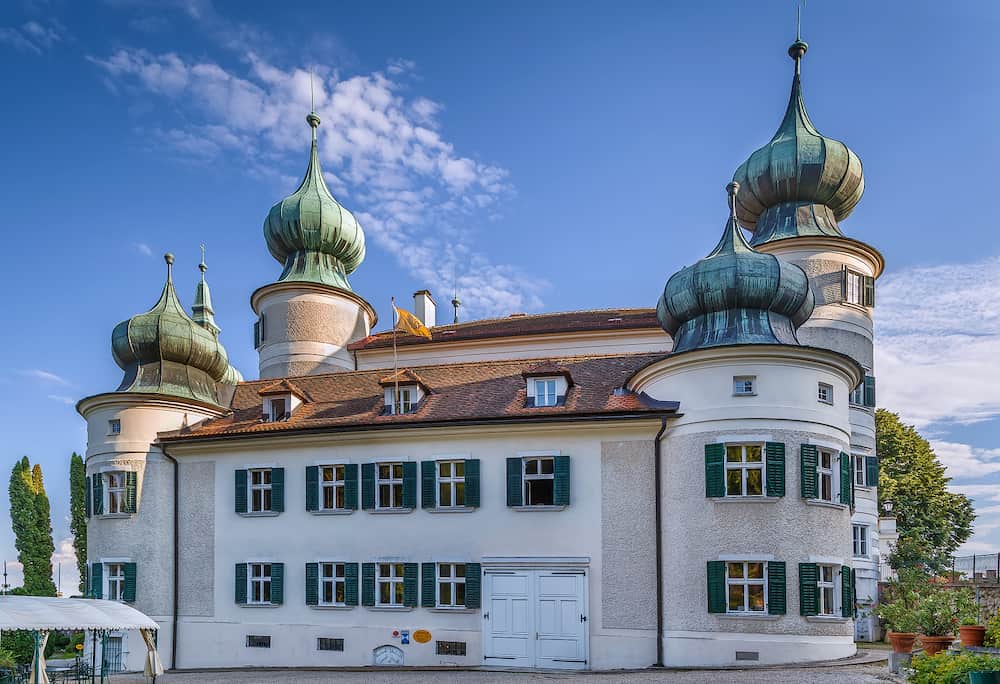
Villa Loos
Located in Melk’s Old Town is Villa Loos, designed by the famous Austrian architect Adolf Loos.
The Art Nouveau villa is a prime example of Loos’ simplistic design style, characterised by clean lines, white stucco walls, deep-set windows, and the use of high-quality materials.
It was completed in the early 1900s and marked the transition from traditional to more modern architecture in the region. Also notable is the lack of decorative ornaments, both inside and outside.
Wachau Valley
The Wachau Valley is a picturesque region near the Danube River, located between Melk and the town of Krems. It is well known for its stunning natural beauty as well as its high-quality wines.
The tradition of winemaking in the region dates back to medieval times and peaked during the rule of the Carolingians. The terraced vineyards produce grapes and apricots that make complex and unique white wines.
Loibenberg, Kellerberg, Achleiten, Singerriedel and Kirnberg are five of the most well-known vineyards in the valley.
The best way to immerse yourself in the culture and history of Wachau is to go on a wine-tasting tour, although most of these depart from Vienna, not Melk.
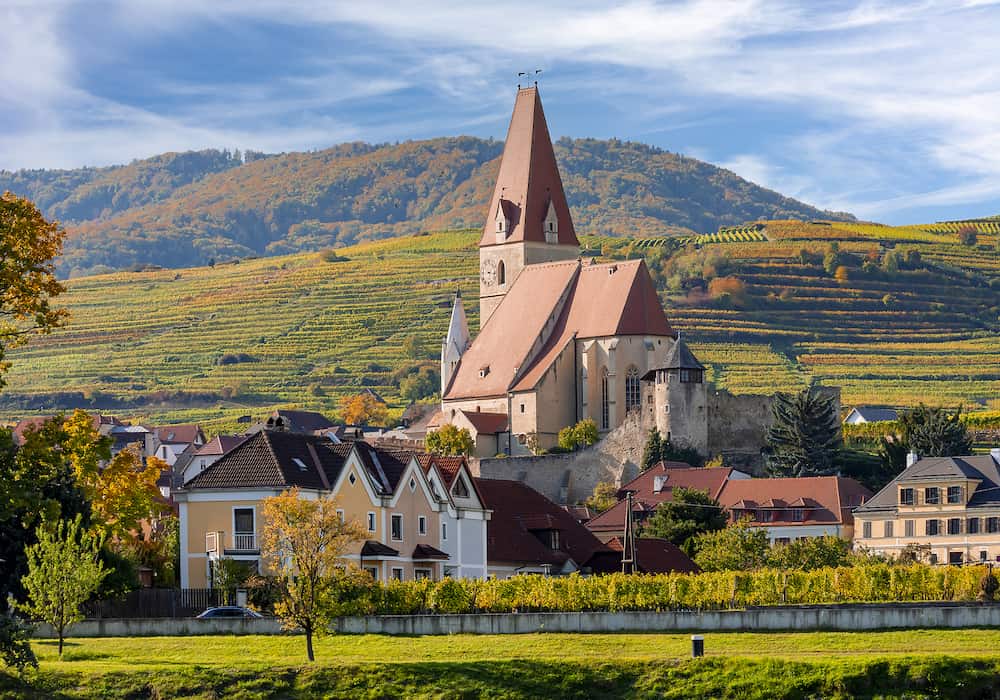
Rathauskeller
Easily the best restaurant in Melk is Rathauskeller, belonging to a hotel of the same name. Authentic and comforting Austrian dishes are served in a cosy, atmospheric dining room by friendly and charismatic waitstaff.
Although the food is very local and traditional, there are also options to suit different dietary requirements, including vegetarian and vegan dishes.
Rathauskeller is loved by both locals and tourists, so you know the food is excellent! The kitchen is open from 11 am until 9 pm, so you can pop in or make a reservation for either lunch or dinner.
Luberegg Castle
Schloss Luberegg is a charming little castle in the Wachau Valley, located near the town of Emmersdorf an der Donau. It is only about five kilometres away from Melk and is found along the opposite side of the Danube River.
The castle dates back to 1787 and has a long and fascinating history. Throughout the centuries, it has been a residence for noble families and served as a summer home for Emperor Franz II.
Today, Luberegg Castle is a popular tourist destination as well as a sought-after wedding venue. If you wish to stay overnight at the castle, there are three beautiful suites available for booking. You can also enjoy a romantic dinner for two here.
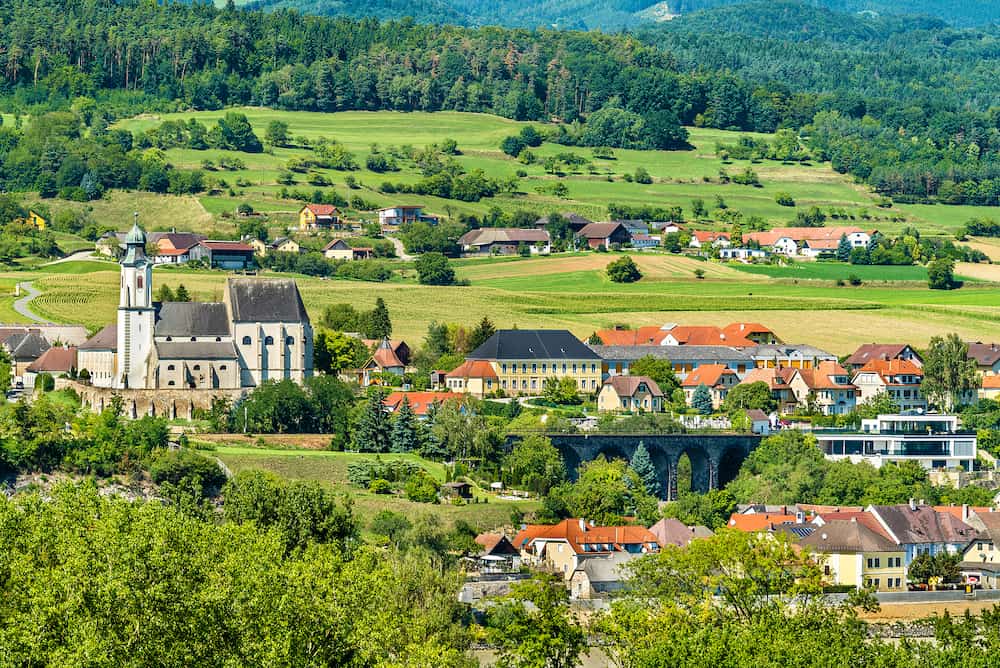
Altes Posthaus Melk
The Altes Posthaus Melk is a historic Neoclassical and Baroque building that was originally constructed as a postal office in the 18th century.
Considered the most stunning post office in all of Austria, the exterior features golden medallions that depict old postmasters from Melk. There is also a figure of a double-headed eagle perched on the rooftop.
This site is the perfect spot to take some photos in front of, as not only is the architecture incredibly beautiful, but this attraction usually isn’t too crowded either.
Unfortunately, the building is currently closed for renovations, so you can only admire the outside for the time being.
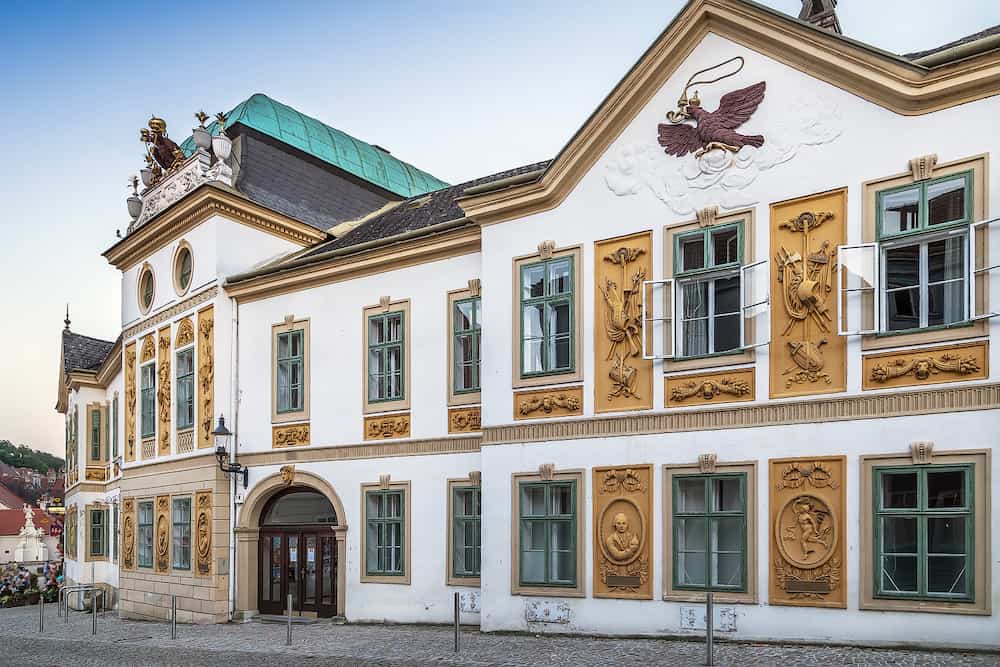
Melk Park
If you’re seeking an outdoor space to rest and relax while still doing some sightseeing at the same time, stop by Melk Park (also known as Stadtpark Melk).
This spacious green area is located close to the Danube River and is surrounded by peaceful, natural scenery.
The park is also home to a variety of local flora and fauna. Walk around and see if you can find Barwig Bär, a small yet cute statue of a bear. If you’re travelling with young kids, there is a playground here too.
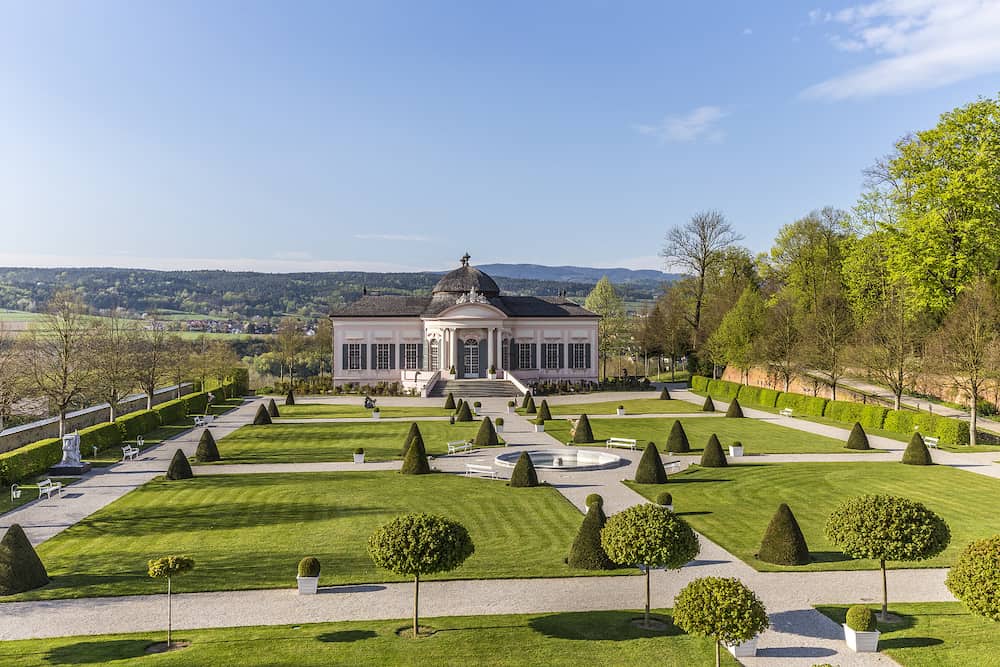
Schönbühel Castle
Travel about six kilometres north of Melk and you’ll find Schönbühel Castle (Schönbühel Schloss), a beautifully restored castle in the scenic Wachau Valley.
The fortress was built in the 12th century atop a 40-metre-high rock along the bank of the Danube River.
Since the castle is privately owned, visitors are not allowed inside, but if you have the extra time, it is worth driving past to get a glimpse at the picturesque exteriors.
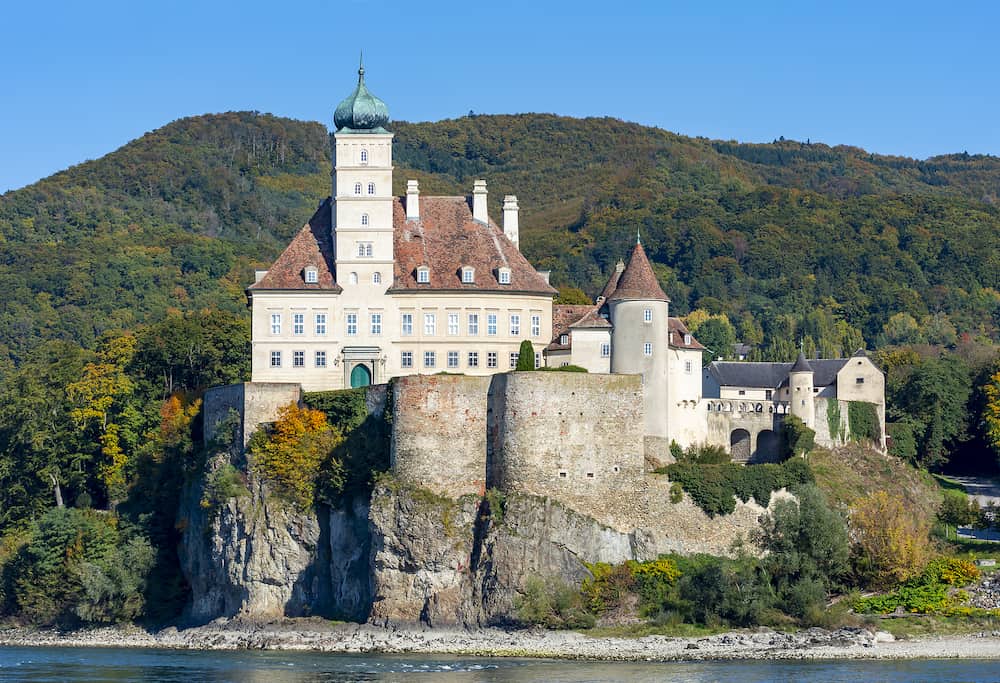
Jauerling-Wachau Nature Park
The Jauerling-Wachau Nature Park is an amazing place to visit if you’re a fan of hiking or outdoor activities in general.
The Jauerling is the highest mountain along the entire Danube, reaching 700 metres above the river. This protected natural area of rolling hills, forests and meadows is home to a diverse variety of flora and fauna.
Visitors at the park can go swimming, cycling, mountain biking and birdwatching. With over 350 km of hiking trails available, it’s also a scenic location to get your steps in.
If you’re visiting Melk during the colder months when a lot of other attractions are closed, you’re in luck, as it transforms into a winter wonderland ready for skiing and building snowmen.
Many of the hiking trails are available in the winter as well, though you will certainly need more suitable footwear.
The park is also an unexpectedly great place for souvenir shopping in Melk, as you can discover a plethora of locally-made items in the gift shop.
Wachauarena
Wachauarena Melk is a large outdoor theatre and concert venue that hosts numerous performances throughout the year. It is also the primary location for the annual Sommerspiele Melk, a traditional summer musical festival.
The outdoor arena is close to Melk Abbey, creating an amazing backdrop during the shows. You can take a look at the program here to see if anything interests you during your stay in Melk.
Melk Gedenkstätte
One thing you might want to do while in the area is stop by the Melk concentration camp memorial site (referred to as a gedenkstätte). The satellite camp in Melk was the largest in Lower Austria, and 14,390 prisoners from at least 26 countries were forced to work there between April 1944 and April 1945.
Guided tours are available upon request but are conducted in German only. You can visit the memorial and the former prisoners’ quarters any day of the week to learn more about the atrocities that took place here and commemorate those whose lives were unjustly taken.
If you’d like to save it for later, please save it to Pinterest.
